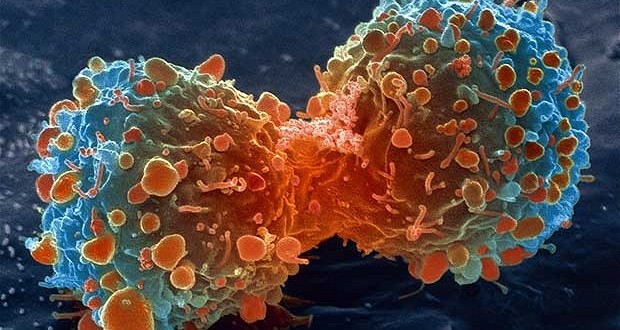Canada’s health-care system needs to brace itself for a major surge in cancer patients.
The number of new cases of the disease diagnosed every year is expected to increase by 40 per cent over the next 15 years, thanks largely to a rising tide of seniors, says a new report.
This is the first time the annual Canadian Cancer Statistics report has presented long-term predictions of the future burden of cancer. The report estimates that 277,000 people a year will be diagnosed with cancer by 2030 – a 40% rise in cases – led by upsurges in prostate and colorectal cancer cases.
Tremendous progress has already been made in the fight against cancer, including big gains in survival rates. But Canada’s rapidly aging population – 1 in 4 Canadians will be 65 or older by 2030 – could push the country beyond its current capacity to provide adequate care for cancer patients. In addition, the population is growing in number. By 2030, there will be about 10 million more people living in Canada, an increase of nearly 30% from 2005.
While the sheer number of cases will rise because of the aging and growing population, today’s report predicts that incidence rates – a measure of the risk of getting cancer – will remain steady, with rates dipping slightly for men and increasing slightly for women.
The surge in cancer cases will have an impact on many aspects of Canadian society, including healthcare systems, healthcare providers, caregivers and families. As treatment and care continue to improve, there will also be a greater need for support for the anticipated increase in cancer survivors.
“Canada urgently needs a plan to ensure that our healthcare systems are sustainable and that all people facing a cancer diagnosis receive high quality, timely care,” says Dr Robert Nuttall, Assistant Director, Cancer Control Policy, Canadian Cancer Society. “Everyone involved in the healthcare system, including cancer researchers, academics, governments, and non-government service providers, must work together to ensure we have the resources in place to respond to the looming increase in cancer cases.”
“This report gives us a clear idea of the scope of the challenge we will be facing in 15 years,” says Dr Eva Grunfeld, a physician scientist at the Ontario Institute for Cancer Research. “It behooves us all to invest now in the research, health care resource planning and prevention strategies we need to ensure Canadians have the cancer care they need in the future.” Dr Grunfeld is also professor and vice chair, department of family and community medicine, University of Toronto.
Planning ahead, together
“These predictions are somewhat daunting, but it’s crucial that we know what’s coming so we can prepare,” says Dr Nuttall. “The information in this report will be tremendously helpful in the planning of cancer control programs for prevention, screening, early detection, treatment, palliative and other medical care.”
Planning for the greater numbers of Canadians with cancer will require coordination in areas such as:
- education and training for medical specialists, such as oncologists, family doctors, nurses, technicians, and personal support workers
- infrastructure, such as diagnostic and treatment facilities, cancer care centres and community-based care
- research into health services requirements, effective public policies, including financial and human resource allocations, and advancements in diagnostics and treatment
- improved support for family caregivers and better support for cancer survivors
“Whether making significant investments, developing multi-sectoral partnerships or supporting important data collection and research, the Government of Canada works collaboratively with the Canadian Cancer Society and other partners, such as the Canadian Partnership Against Cancer, to have a positive impact on the lives of Canadians facing cancer,” says Health Minister Rona Ambrose. “Moving forward we will continue our efforts to further control this disease and reduce its impact on Canadians.”
Preventing cancers, taking action
The report also highlights the need for continued strengthening of cancer prevention efforts related to modifiable risk factors and early detection of cancer. “We know that about half of cancer cases can be prevented through healthy behaviours and policies that protect the public,” says Dr Nuttall. “So in a sense this report underlines just how important it is to focus on healthy behaviours and healthy public policies so we can stem the tide and reduce the number of people who get cancer.”
There is a lot that can be done to reduce the burden of cancer in the future. For example:
- If you smoke, quit. If you don’t smoke, don’t start. It’s estimated that smoking is responsible for 30% of all cancer deaths in Canada and is related to more than 85% of lung cancer cases.
- Get screened. If you’re in a certain age or population group, there are screening tests to help find breast, cervical and colorectal cancer before you’ve even noticed symptoms. Learn more at cancer.ca/screening
- If 80% of Canadians aged 50+ were screened for colorectal cancer using the stool test, this could lead to 40,000 lives saved over the next 15 years.
- Get vaccinated against HPV. This virus is linked with cervical cancer as well as cancers of the penis, anus, vulva, vagina, oral cavity and throat.
- Eat well and be active. About one-third of all cancers can be prevented by eating well, being active and maintaining a healthy body weight.
- Practice sun safety and don’t use indoor tanning. Melanoma is the deadliest skin cancer and is mostly preventable.
Progress
It’s also important to note that we are making great progress in the fight against cancer. The overall risk of dying of cancer is dropping in both men and women, thanks to improvements in screening, early detection and treatment. As for survival, today over 60% of Canadians diagnosed with cancer will survive at least 5 years after their diagnosis. In the 1940s, survival was about 25%.
“In the next 15 years, there are going to be improvements in how we identify people at risk, in detecting cancer early and treating it more precisely,” says Dr Nuttall. “All of this will lead to better outcomes for people with cancer.”
Agencies/Canadajournal/Press Releases
 Canada Journal – News of the World Articles and videos to bring you the biggest Canadian news stories from across the country every day
Canada Journal – News of the World Articles and videos to bring you the biggest Canadian news stories from across the country every day



